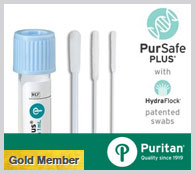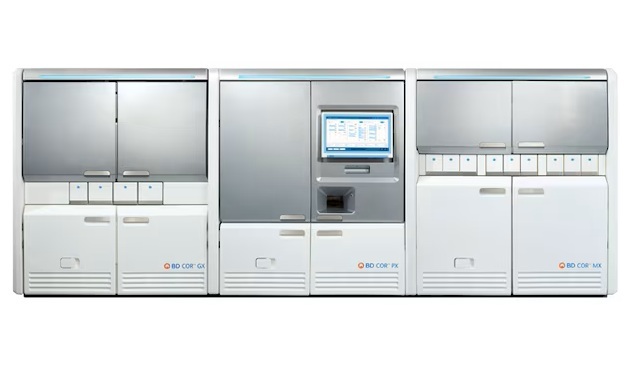Syphilis Screening Requires a Paradigm Shift
By LabMedica International staff writers
Posted on 07 Sep 2010
The mainstay of diagnosis for Treponema pallidum infections is based on nontreponemal and treponemal serologic tests.Posted on 07 Sep 2010
T. pallidum, the causative agent of syphilis, continues to challenge clinicians with its nuances in diagnosis and management. The disease manifests in primary, secondary latent and late stages and not all tests are equally sensitive or specific.

Image: False-color scanning electron micrograph (SEM) of the anaerobic spirochaete bacteria Treponema pallidum, the causative agent of syphilis (photo courtesy the NIH).
Based on the Wasserman test introduced more than 100 years ago, syphilis diagnosis continues to rely on serologic assays because T. pallidum cannot be cultured in vitro. Furthermore, direct visualization of the spirochete requires lesions and either fluorescent antibodies or a dark-field microscope, neither of which may be readily available. T. pallidum nucleic acid amplification tests are not widely available for use by clinical laboratories. Thus, serologic tests are the foundation of syphilis management, and knowledge of their diagnostic limitations is critical for clinicians.
Many new diagnostic methods for syphilis have been developed, using specific treponemal antigens and novel formats, including rapid point-of-care tests, enzyme immunoassays (EIAs), and chemiluminescence assays. Both sensitive and specific, new screening tests detect antitreponemal IgM and IgG antibodies by use of wild type or recombinant T. pallidum antigens. However, these tests cannot distinguish between recent and remote or treated versus untreated infections. In addition, the screening tests require confirmation with nontreponemal tests. This use of treponemal tests for screening and nontreponemal serologic tests as confirmatory tests is a reversal of long-held practice.
New rapid immunochromatographic strip (ICS) treponemal tests are beneficial in nonclinical settings because of their low cost, ease of use, and reasonable performance. Treponemal EIAs and chemiluminescence assays will be used increasingly because of their automation for screening large volumes of patients. In patients suspected of having syphilis, they will be a valuable clinical adjunct. Use in low prevalence populations will introduce new problems because some positive test results will be false positive.
In a review published in the September 2010 issue of Clinical Infectious Diseases, suggest that an initial positive EIA screening test should be followed up if the serum is reactive with EIA treponemal test but nonreactive with rapid plasma reagin (RPR) test. The authors suggest using T. pallidum particle agglutination or fluorescent treponemal antibody tests to indicate whether treatment is necessary.
An immune-capture EIA (ICE Syphilis; Murex Biotech; Dartford, UK) that used recombinant TpN15, TpN17, and TpN47 had higher sensitivity than another EIA that used wild-type antigens.














